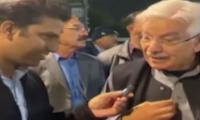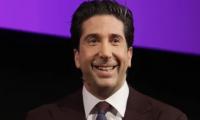A gloomy early afternoon in mid-November New York, a heavily overcast grey sky - it is a perfect setup to enter the cemented austerity of The Met Breuer and to quietly ascend to the third floor to find yourself eased into the whispering anxieties of Edvard Munch (1863-1944).
You enter and stare at the Norwegian artist’s multiple, varied self-portraits and wonder: Is he looking at himself, at you, at the world, or at an eternity beyond his or our reach? Munch is legendary for his uncanny ability to capture inexplicable anxieties. His Self-Portrait: Between the Clock and the Bed (1940-43), from which this Met exhibition (running from 15 November 2017 to 4 February 2018) takes its name, stares at us with such disarming probity you don’t know which way to turn. You might as well sit down and stare back at him and see what happens.
As soon as you enter the ascetic galleries he starts staring at you point blank, and that staring stays with you throughout the sobriety of the winding galleries, and then follows you into the quiet busyness of Manhattan once you leave.
Featuring 43 of his most famous works, including 16 self-portraits, the exhibition projects an image of the artist as the epiphany of self-absorbed disquietude. For much of his most provocative work, Edvard Munch was and remained an introverted Kierkegaardian portrait of ‘fear and trembling’ staring the abyss in the eye. What did he see, and why did he turn around and look at us with such a self-assured, piercing eye?
By all accounts, Munch was an obsessive-compulsive artist, having produced thousands of works ranging from woodcuts, drawings, photographs, and sculptures, upping the ante on his own self-indulgence with anxiety-ridden angst.
From aesthetic euphoria or emotive despair (or both), morally contingent on his time or carefree to reach ours, delivered from limerence or loathing we will never (and should never) know, the evidence gathered in this revelatory exhibition is overwhelming, timely, and prophetic. He was painting his own anxieties and his own age - he has aged well to reach our anxieties and our age.
Much of the literature on Edvard Munch gathers momentum around his troubled childhood, when, at a tender age, he lost his beloved mother and sister - as best evidenced in his early masterpieces The Sick Child (1896) and The Dead Mother (1900).
But the distance between that private mourning and the public terror of his globally celebrated The Scream (1893-1910) points to a much darker history, far beyond the artist’s psychological disposition. We are, certainly from his Self-Portrait in Hell (1903) forward, in the presence of a moral imaginary from which his towering contemporaries, Henrik Ibsen and August Strindberg (and before them all Soren Kierkegaard), had also emerged. He ingeniously painted what they wrote.
The three masterpieces, collected in a gallery in this Met exhibition under the general title of ‘Despair’ - all variations on his Scream - are the locus classicus of Munch’s encounter with the spirit of his age, however personally or psychologically predisposed to that encounter he might have been. Too much psychopathologising his art will rob it of its monumental significance in mapping out the perturbed anxieties of an entire civilisation at its moment of doom.
By the time the 77-year old Munch did his Self-Portrait by the Window (1940), the psychological and the aesthetic had sublated into the testimonial of an age that had demanded and exacted a Munch to document it for the posterity. The dead of winter outside the window sills, the fiery warmth of the interior around Munch’s face ooze through his eyes a sense of full knowledge and resignation. He has seen the abyss. He is resigned. But he is also warning.
Central in this rich and powerful exhibition, and the learned catalogue that is published with it, are Munch’s self-portraits. What did he see in himself, what did he see in us, that he kept at it tirelessly, trying to figure us all out with such steadfast tenacity?
In her insightful essay for the catalogue, ‘The Untimely Face of Munch,’ Allison Morehead draws critical attention to the ‘maximum frontage’ paradoxically evident in Munch’s self-portraits. They are, as she puts it, “by definition confrontational but paradoxically less revealing... the way that the painted eyes narrowly avoid meeting the viewer’s gaze.”
This ‘radical frontality,’ as she rightly calls the averted gaze, marks ‘the anachronistic potential of the object itself.’
Morehead leaves that crucial insight at that. But that ‘anachronistic potential’ has now a rendezvous with the chronic crisis of our global angst, as we live through the terror of the Trump presidency and all that it means, and all that it entails in the country and the clime in which this exhibition is curated.
The terror of Trump and what Trump personifies is not that he and his followers are the exception. The terror is that they are the rule. The Democratic opposition to him is as - if not more - corrupt and frightful as he is, and the liberal democracy that has paved his way to the White House now stands charged with a moral bankruptcy of historic dimensions. We are left (true to our presence in Munch’s labyrinth) hopeless, lightless, trapped, screaming in despair.
Munch’s exhibition in New York is both a revelation and a warning: Where do we go from here? The world has been viciously colonised to spread ‘the Enlightenment modernity’ to which this Donald Trump is now a crowning achievement. Trump is now doing to the US, what the US and, before it, Europe, have been doing to the world. Americans who did not vote for Trump are aghast at how dare he do to them what Obama had been doing (or Hilary Clinton would have done) to the world.
Munch’s Despair was a premonition of yet another juncture of existential fears: “Where are we now, when we have nowhere to go?” Even more terrorising than Trump and what he is and what he does is the panoply of liberal hogwash that seeks to dismiss him as a glitch in the system. Munch is the anachronistic evidence that Trump is no glitch, that Trump is the promised messiah of ‘Western’ liberal democracy.
Trump is the vulgar personification of Munch’s iconic, allegorical, silent ‘Scream.’ There is no scream loud enough to mark the terror of a democratic delusion that chooses a Donald Trump for its highest political and symbolic office. Add to Donald Trump his children, his extended family, his friends, his associates, his business partners, his cabinet, and the rest of the Republican and Democratic parties and your ‘scream’ will choke in your throat.
You exit Edvard Munch’s exhibition and step into Trump’s America ennobled and frightened at one and the same time. The fear and trembling spells out the cognitive dissonance between the emotive universe that animates Munch’s art and the world of selfies and tweets, from which we escape into the quiet serenity of an art exhibition devoted to an intensely contemplative artist.
If the world we live in, outside the museum walls, is not framed and informed by the pensive sobriety of those bygone artists, the reverse will inevitably happen.
This article has been excerpted from: ‘Making sense of Edvard Munch in Trump’s America.’
Courtesy: Aljazeera.com
Three years later in November 2024, ISS manoeuvre to avoid impact with debris from a defunct satellite
Life of Hazrat Ali , which began from Holy Kaaba is widely remembered as shining example of courage, wisdom and...
Proxies Pakistan created to create security paradigm openly revolted and came home to fight their own creator
Since 2020, smoking rates in EU have decreased by only 1%, as revealed by Special Eurobarometer 539
Battle between good and bad actors increasingly hinges on creativity and technological prowess
Some of this contemporary music is profoundly moving, with exceptional compositions produced in state-of-the-art studios







